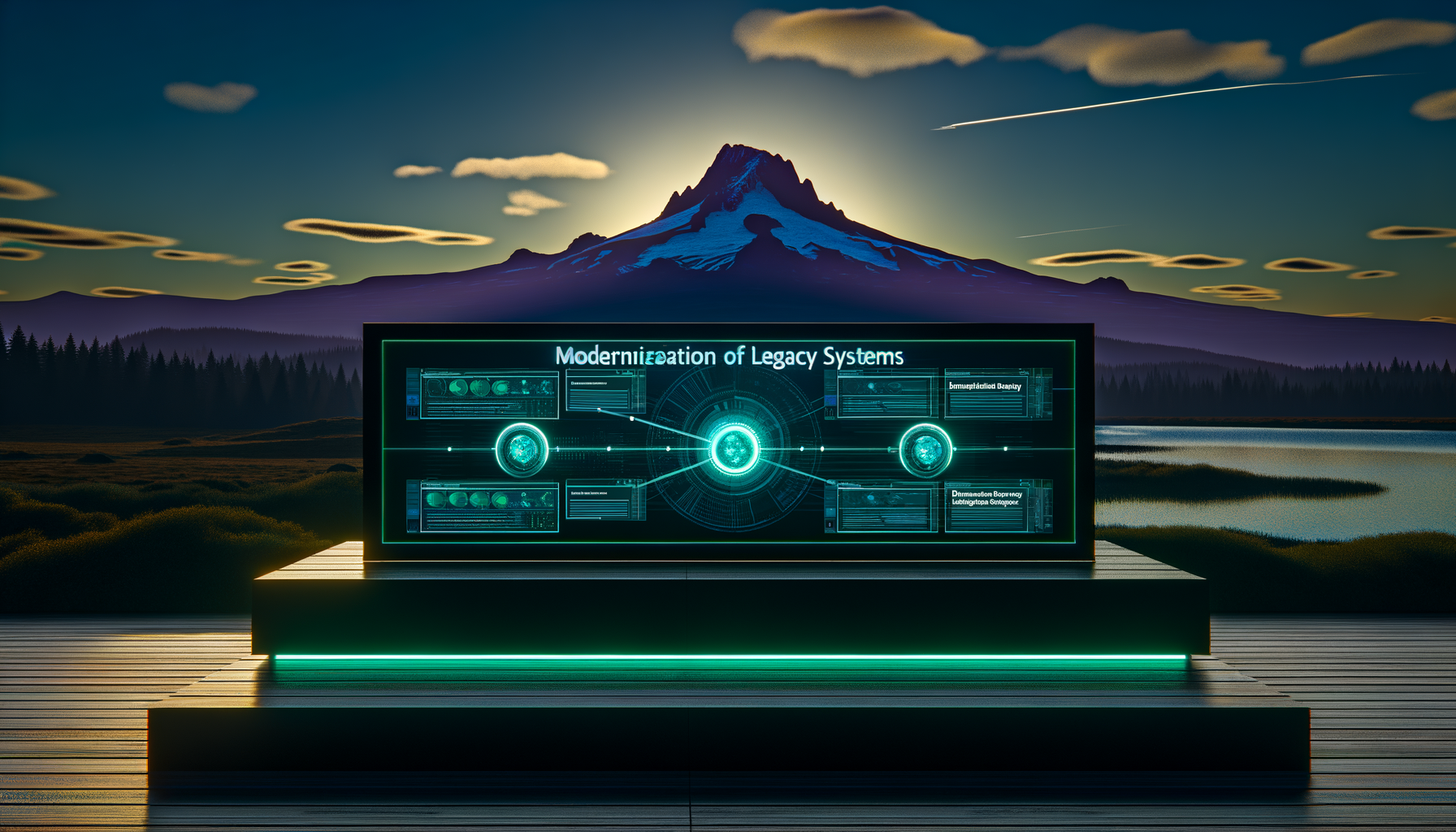Is your legacy system silently costing you growth opportunities? With over 70% of IT budgets being spent on maintaining outdated systems, modernizing legacy applications is no longer optional—it's essential for competitive survival. By embracing intelligent modernization strategies, you can unlock significant ROI, enhance scalability, and future-proof your organization. In this post, we'll explore practical steps to modernize legacy systems, leverage AI and low-code platforms, and ensure your business stays ahead of the curve.
The Case for Legacy Application Modernization
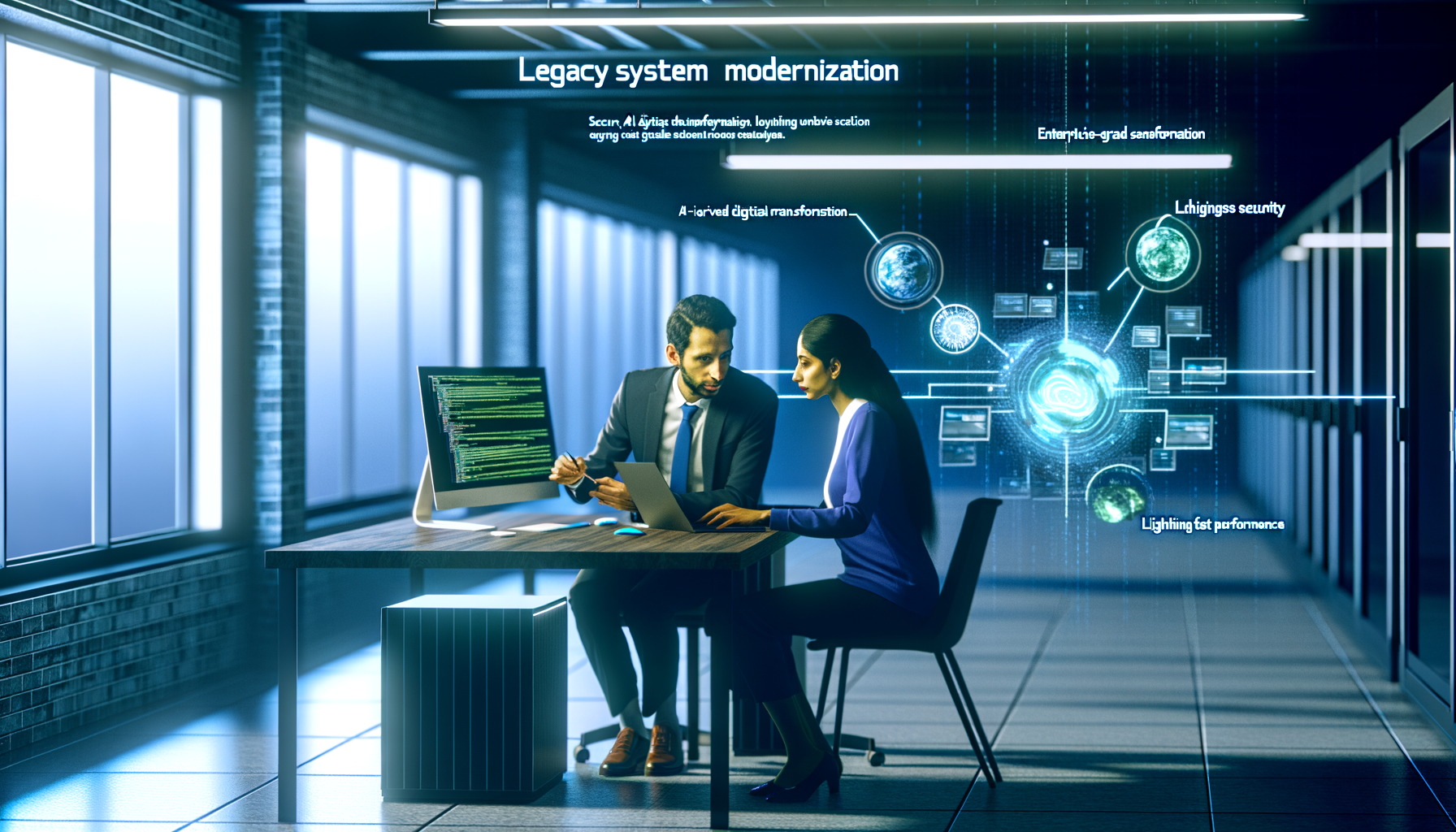
Code-review collaboration in a modern office setting.
Legacy systems can be like silent vampires, draining IT resources while offering little in terms of agility or innovation. According to a 2023 Gartner report, companies can cut operational costs by up to 25% through successful legacy modernization.
Modernizing these systems can help improve operational efficiency, reduce technical debt, and enhance security—key concerns for CTOs and CIOs.
By updating legacy applications, organizations can better align with modern digital transformation goals and create more value for stakeholders.
CALLOUT
Companies can save up to 25% in operational costs by modernizing legacy systems. (Gartner, 2023)
Navigating Monolith to Microservices
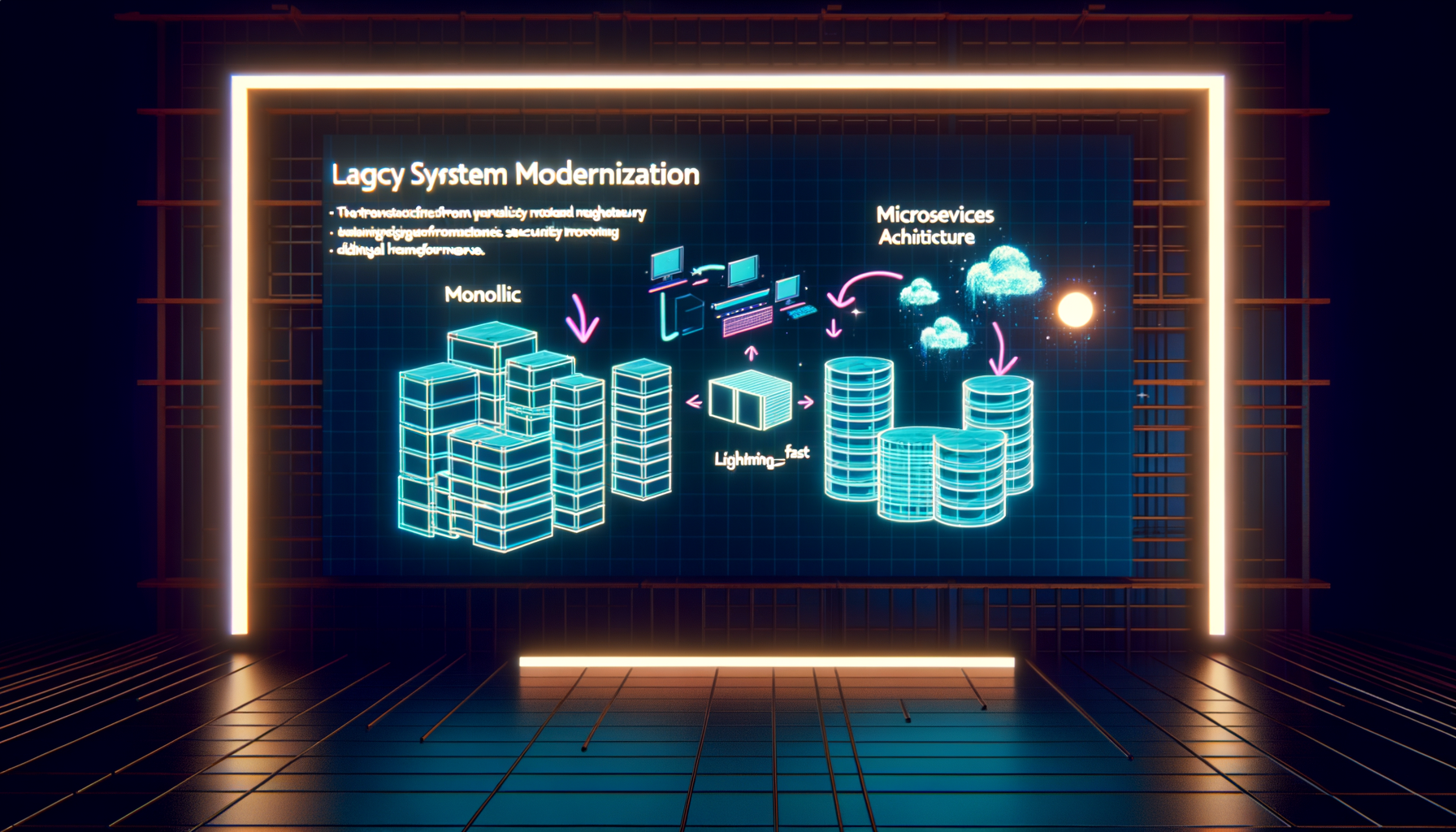
Diagram showing transition from monolith to microservices architecture.
Transitioning from monolithic architectures to microservices is akin to going from a lumbering giant to a fleet-footed dancer. This shift allows for scalability, easier updates, and improved fault isolation.
Microservices enable teams to deploy new features independently, reducing downtime and accelerating time-to-market—a critical advantage in today’s fast-paced tech environment.
While the transition can be complex, using proven frameworks and tools can streamline the process and minimize disruption.
LIST
- •Enhanced scalability
- •Faster deployment cycles
- •Improved fault isolation
AI and Automation: Catalysts for Modernization
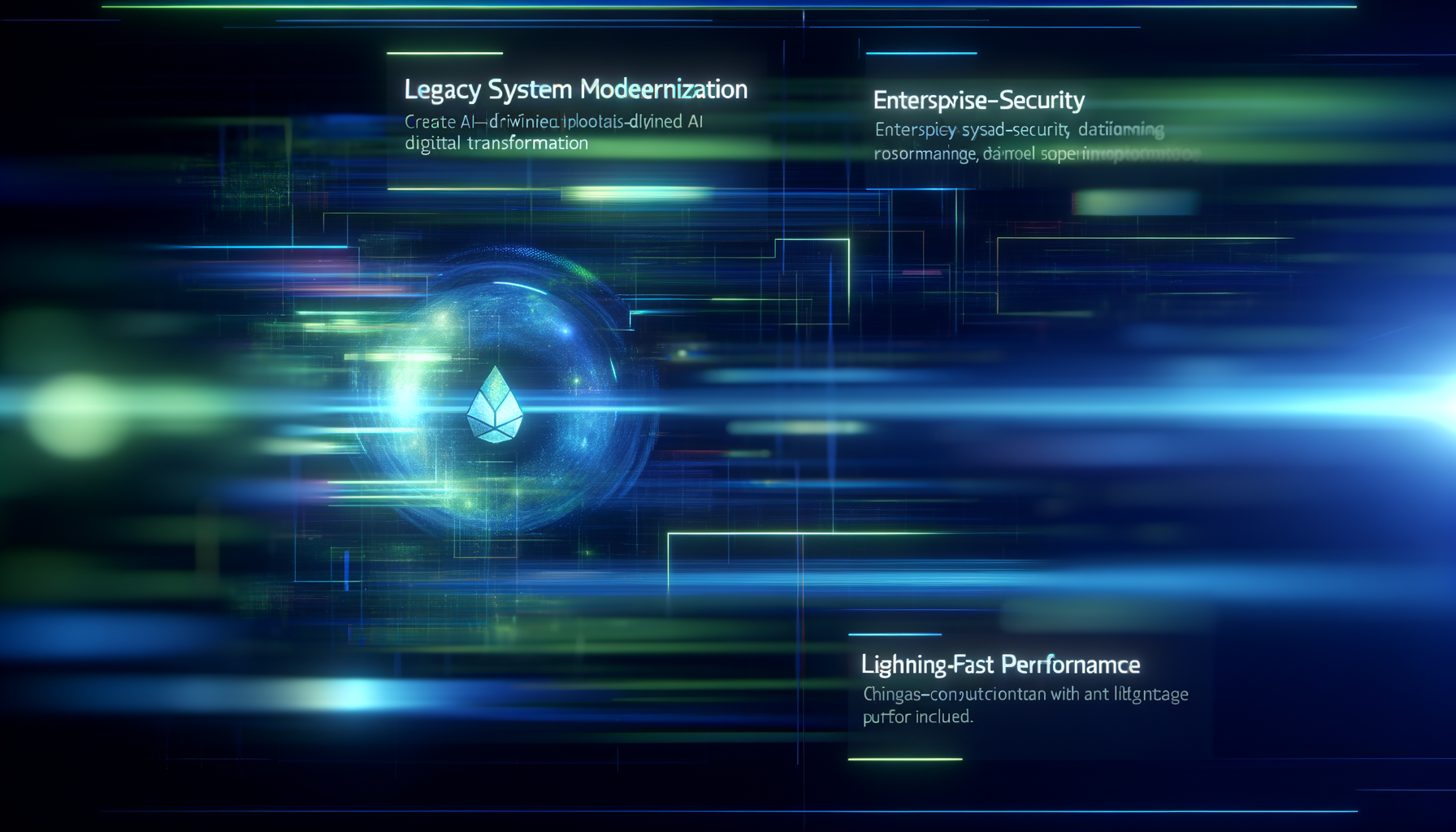
Abstract image of AI algorithms processing data.
AI and automation aren't just buzzwords—they're powerful tools that can dramatically speed up legacy system modernization.
By automating routine tasks and employing AI for predictive analytics, organizations can reduce errors and improve decision-making processes.
Platforms like Quicklook’s AI-driven solutions can automate code refactoring and testing, making the modernization process more efficient and cost-effective.
QUOTE
Automation is to modernization what oil is to an engine—it keeps things running smoothly with less friction.
The Role of Low-Code Platforms
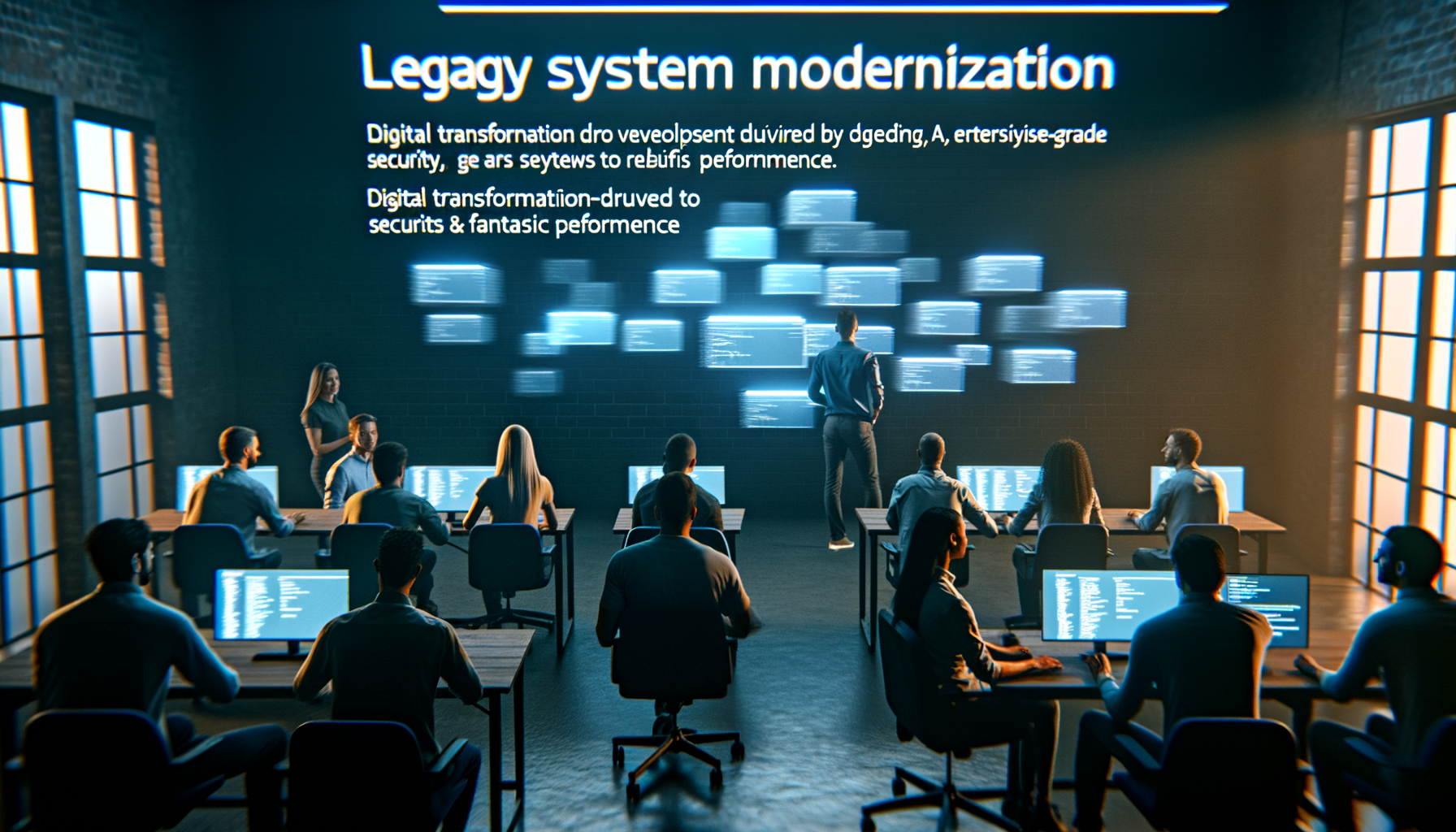
Developers using low-code platform to update legacy systems.
Low-code platforms democratize development, enabling business leaders and tech teams to collaborate more efficiently.
These platforms facilitate rapid prototyping and deployment, which is crucial for modernizing legacy systems without extensive coding knowledge.
Quicklook’s custom application development offerings leverage low-code and no-code solutions to ensure faster time-to-market while maintaining enterprise-grade quality.
LIST
- •Rapid prototyping
- •Business-IT collaboration
- •Reduced need for extensive coding
Best Practices for Cloud Migration
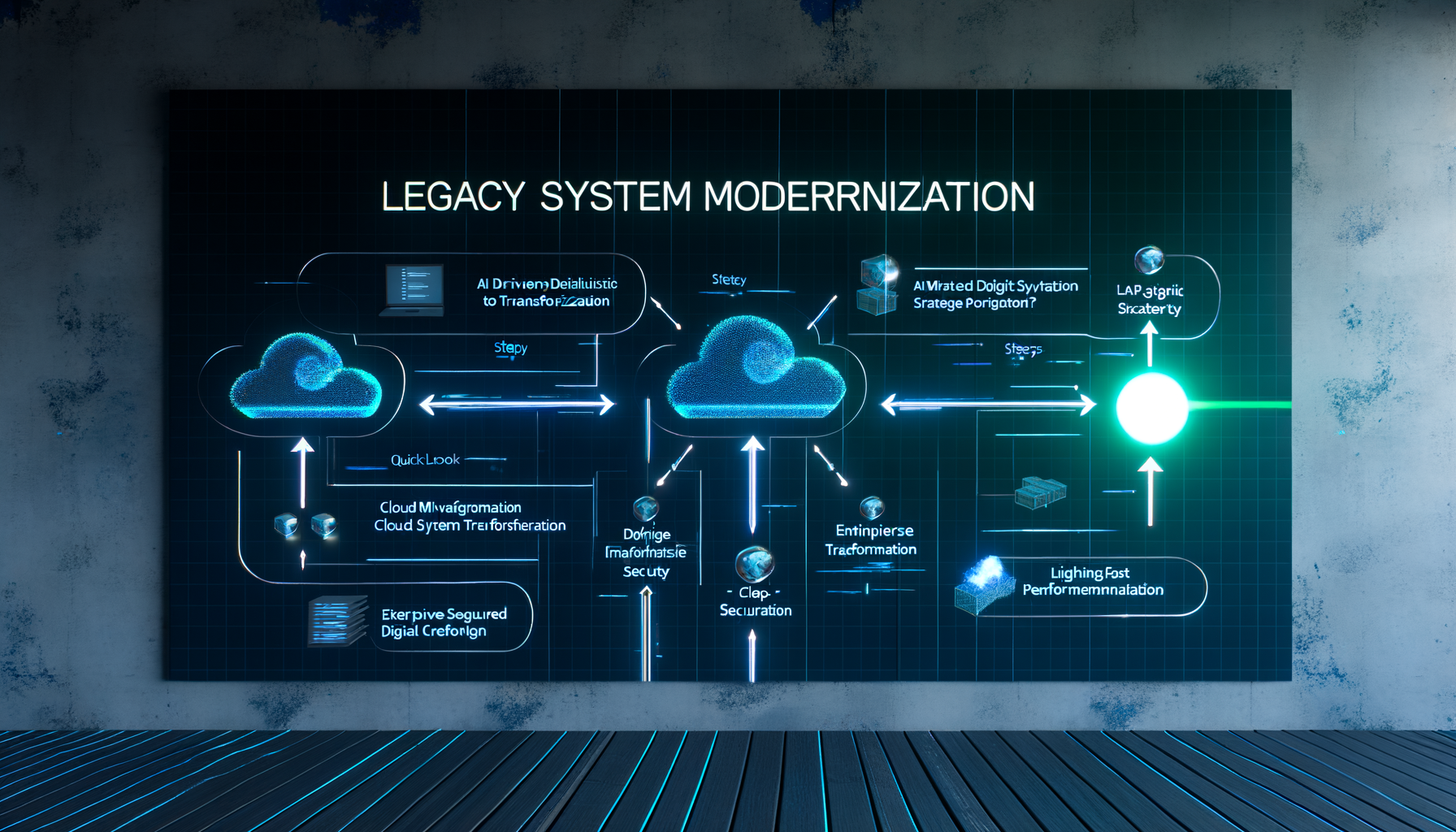
Cloud migration strategy diagram with key steps highlighted.
Migrating to the cloud is a cornerstone of modernizing legacy systems, offering scalability and cost-efficiency.
A robust cloud migration strategy involves assessing current workloads, selecting the right cloud platform, and planning for security and compliance.
By using a phased approach and leveraging expert insights, organizations can minimize risks and ensure a smooth transition.
CALLOUT
Cloud migration can reduce infrastructure costs by up to 30%. (Forbes, 2023)
Frequently Asked Questions
QWhat are the key benefits of modernizing legacy applications?
QHow can AI and automation accelerate legacy system modernization?
QWhat role do low-code and no-code platforms play in updating legacy systems?
Conclusion
Legacy system modernization is not just a technical upgrade; it's a strategic move towards sustainable growth and innovation.
Future Vision
As technology continues to evolve, staying ahead requires both agility and insight.
Schedule your AI audit with Quicklook.
